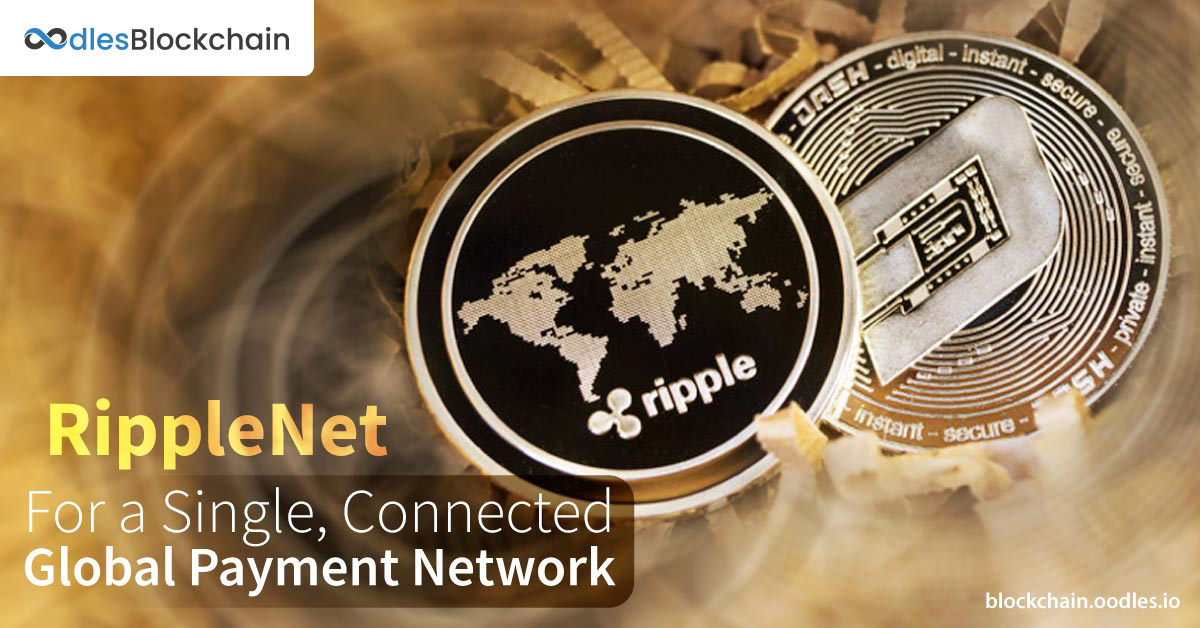-
The Current Scenario of Payment Networks
Today's global payment systems fail to address lacking efficient inter-connectivity to serve the needs of today's customers. They deal with pain points like limited transparency, low speed, and high cost- stemming from the absence of a single, global payment network.
Consequently, it has moved businesses and consumers away from banks towards Fintech providers. It is because the latter is much adequate and efficient in meeting consumers' payment and banking needs.
What opportunities does Ripple offer to Banks?
RippleNet provides a single, frictionless blockchain platform for conducting cross-border payments.
Financial institutions like Banks can use it to conduct payments using its distributed financial technology, which provides real-time messaging, clearing, and settlement of transactions.
By adopting the technology of RippleNet, banks get robust connectivity, standardized technology, and necessary data attachments with each transaction.
It's the Ripple's distributed financial technology that outruns today's complex infrastructure by lowering transaction costs and expediting speed with end-to-end visibility.
RippleNet's ecosystem of participants is categorized into two groups; network users (corporates, consumers, and others) and network members (payment providers and banks).
Read more: Ripple and Stellar are ready to take over the Traditional Banking Systems
Network Members
Banks leveraging RippleNet can drive new user acquisition and provide enhanced services to current customers. They can process payments for corporates and consumers. Also, some could process payments for other banks as well as provide them with liquidity.
Payment Providers leveraging RippleNet can enable supply liquidity and increase payout reach for banks to expand their payment volumes.
Network Users
Platform businesses fall into this category. They can send disbursements of high volume and minimum value to a worldwide network of merchants, suppliers, and employees.
Corporate treasury departments can enable sending large disbursements using RippleNet across their worldwide supply chain to achieve improved capital efficiency, control, and visibility.
Banks and Payments Providers, which only want to send payments, rather than processing them, could leverage RippleNet. In turn, they can overcome the high costs and limitations of correspondent banking.
Consumers can use RippleNet's single, global payment network to send cross-border payments, through their payment provider or bank for a real-time and cost-efficient option.
Also read: Ripple XRP Breaks into the EU, Exchange App Development to Hit Hikes
Ripple for Banks
Today's customers want the ability to send global low-value payments in real-time and on-demand- not only to banking networks but also to developing fintech applications and networks (the latter may require cryptocurrency wallet development).
The conventional system and today's infrastructure push banks to execute payments in batch, which results in lengthy settlement times, poor customer experience, and high processing costs.
RippleNet: On-demand, Efficient Payment Infrastructure
Using Ripple for Banks can help connect those siloed networks via an open, neutral protocol called Interledger Protocol (ILP). Subsequently, it would bring efficiency to financial settlement time by allowing real-time settlements along with ensuring transaction certainty and eliminating settlement risk.
RippleNet also provides data-rich messaging between transacting participants- providing a real-time payment experience to end-users.
Also Read: Examining Cross-border Payment Solutions Powered with Ripple Blockchain
xCurrent
Ripple's software called xCurrent allows banks to stand out by providing them with innovative cross-border payment services at low-cost settlements.
xCurrent, designed to match the requirements of banks, fits perfectly within their existing issues, information security framework, and compliance.
RippleNet's standardized technology, xCurrent, is also the first global real-time settlement system (RTGS). It enables banks to message, clear and settle their transactions with improved transparency, increased speed, and efficiency across RippleNet's global network of payment providers and banks.
The solution is developed around ILP. As mentioned earlier, Interledger Protocol (ILP), which connects siloed networks via an open, neutral protocol, enables interoperation between payment networks and different ledgers.
xCurrent offers an end-to-end, cryptographically secure payment process equipped with transaction immutability and information layoffs.
xCurrent, designed to serve banks' demands, complies with their risk, policy and compliance requirements. Due to software architecture, it also reduces business disruptions and integration overheads.
Oodles is a blockchain development company having experience in building blockchain solutions for different industrial use cases with platforms like Ripple, Stellar, and more.

Our Offices
INDIA
Emaar Digital Greens, Sector 61,
Gurugram, Haryana
122011.
Welldone Tech Park,
Sector 48, Sohna road,
Gurugram, Haryana
122018.














